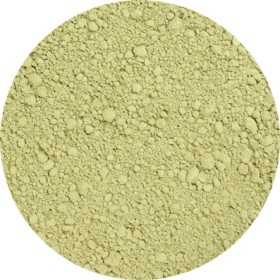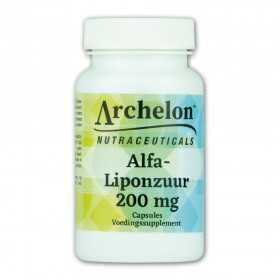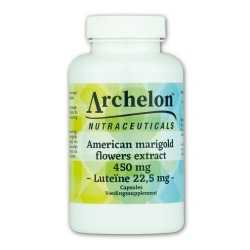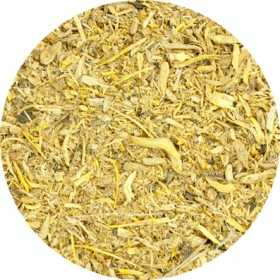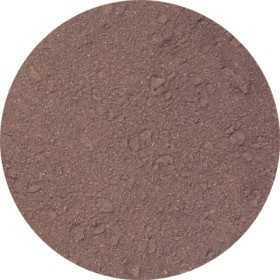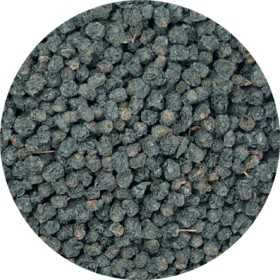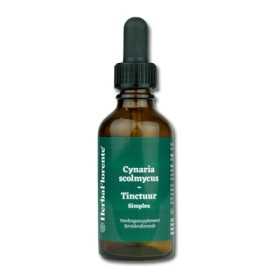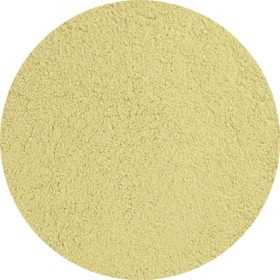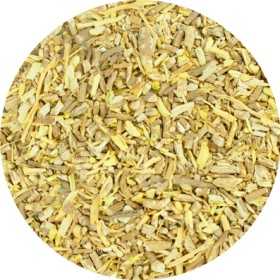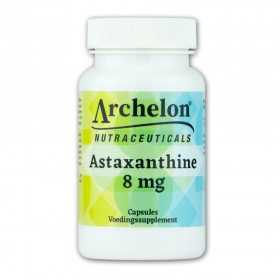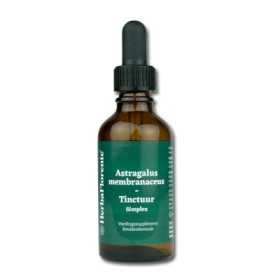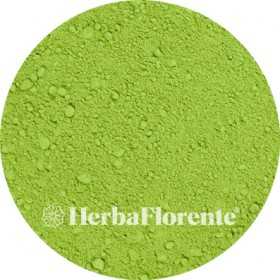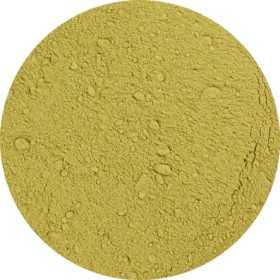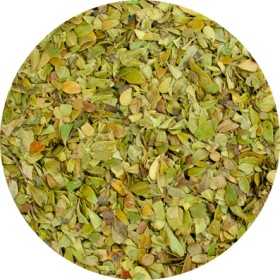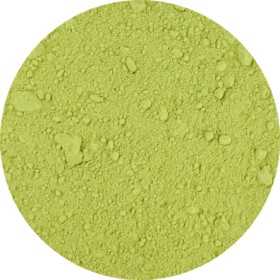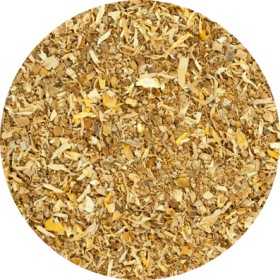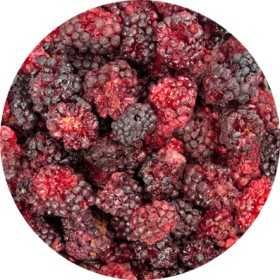Detox
There are 175 products.
A-C-D3 & Zinc
Vitamin A plays a crucial role in various biochemical and physiological processes in cells. It binds to retinoid receptors, which activate or deactivate genes involved in cell specialization.
Ascorbic acid is the pure form of vitamin C. People generally tolerate buffered forms of ascorbic acid better due to the lack of gastrointestinal complaints. Vitamin C is essential for the body.
Although our skin can produce vitamin D, this is often insufficient. Vitamin D supplementation is therefore often necessary, because this vitamin plays a role in various body processes.
Zinc is available in various forms, with zinc bisglycinate having excellent bioavailability.
Ascorbic acid is the pure form of vitamin C. People generally tolerate buffered forms of ascorbic acid better due to the lack of gastrointestinal complaints. Vitamin C is essential for the body.
Although our skin can produce vitamin D, this is often insufficient. Vitamin D supplementation is therefore often necessary, because this vitamin plays a role in various body processes.
Zinc is available in various forms, with zinc bisglycinate having excellent bioavailability.
€35.95
Algae (Clubweed) - Ascophyllum nodosum
Ascophyllum nodosum, better known as clubweed, is a type of brown algae characterized by the presence of small blisters with slimy contents on the stems, in which the reproductive organs are located. These stems also contain large, gas-filled tubercles that help the plant stand upright under water. Knotweed varies in color from olive green to golden brown. The thallus can reach a length of 30 to 60 cm and is flexible, so that it can sway with the powerful movements of the water.
€2.00
From: €2.00
Alpha Lipoic Acid - 200 mg
Alpha-lipoic acid is a sulfur-containing unsaturated fatty acid that occurs naturally in our body. The body can produce alpha-lipoic acid itself, but it also occurs in foods such as potatoes, broccoli and spinach. However, the body can only produce small amounts of it itself and it is therefore essential to get it through food or supplementation. Especially as the body ages, production decreases.
€40.95
American Marigold Flowers Extract 450 mg – Lutein 22.5 mg
Lutein is an orange-red carotenoid pigment produced by plants and found in colorful fruits and vegetables. In the human body, lutein is one of the dominant pigments, with a high concentration in the macula of the eye. Our product is made from marigolds, which contain a broad spectrum of carotenoids.
Lutein is a bioactive substance that belongs to the carotenoids. It is a natural yellow dye (derived from the Latin 'luteus', meaning yellow) and is commonly found in dark green leafy vegetables such as spinach, kale and broccoli, as well as various fruits, corn and carrots. Egg yolks are also a rich source of lutein.
Lutein is a bioactive substance that belongs to the carotenoids. It is a natural yellow dye (derived from the Latin 'luteus', meaning yellow) and is commonly found in dark green leafy vegetables such as spinach, kale and broccoli, as well as various fruits, corn and carrots. Egg yolks are also a rich source of lutein.
€26.95
Angelica - Angelica angelicae
The angelica (Angelica archangelica), also known as archangelica, belongs to the umbellifer family (Apiaceae). This plant thrives in moist, very nutrient-rich soil along water edges, such as the IJsselmeer, river banks and in osier banks. In addition, the angelica is also grown in gardens.
Historically, angelica is known for its medicinal properties. The plant is still grown locally from central Germany to Turkestan. A sweet-smelling oil known as angelica oil is extracted from the seeds and roots, which is used in the cosmetic industry, liquor distilleries and bakeries. In addition, the stems and petioles are often candied because of their sweet and fragrant taste.
Historically, angelica is known for its medicinal properties. The plant is still grown locally from central Germany to Turkestan. A sweet-smelling oil known as angelica oil is extracted from the seeds and roots, which is used in the cosmetic industry, liquor distilleries and bakeries. In addition, the stems and petioles are often candied because of their sweet and fragrant taste.
€2.60
From: €2.60
Aronia berry - Arnoia melanocarpa
Out-of-Stock
Aronia berries, also called black chokeberries (Aronia melanocarpa), grow on compact bushes of about 1 to 3 meters high. The berries have a deep purple to black color.
Aronia berries are particularly rich in anthocyanins, the flavonoids that give the berries their characteristic color. Flavonoids are plant substances that protect the plant against ultraviolet light, oxidation and heat. Compared to blueberries, aronia berries contain four times more anthocyanins.
The black fruits contain different types of anthocyanins. The natural function of these anthocyanins and other polyphenols is to protect the seed of the aronia berry against harmful external influences. Anthocyanins act as natural antioxidants.
Aronia berries are particularly rich in anthocyanins, the flavonoids that give the berries their characteristic color. Flavonoids are plant substances that protect the plant against ultraviolet light, oxidation and heat. Compared to blueberries, aronia berries contain four times more anthocyanins.
The black fruits contain different types of anthocyanins. The natural function of these anthocyanins and other polyphenols is to protect the seed of the aronia berry against harmful external influences. Anthocyanins act as natural antioxidants.
€2.50
From: €2.50
Aronia berry - Arnoia melanocarpa - Whole
Aronia berries, also called black chokeberries (Aronia melanocarpa), grow on compact bushes of about 1 to 3 meters high. The berries have a deep purple to black color.
Aronia berries are particularly rich in anthocyanins, the flavonoids that give the berries their characteristic color. Flavonoids are plant substances that protect the plant against ultraviolet light, oxidation and heat. Compared to blueberries, aronia berries contain four times more anthocyanins.
The black fruits contain different types of anthocyanins. The natural function of these anthocyanins and other polyphenols is to protect the seed of the aronia berry against harmful external influences. Anthocyanins act as natural antioxidants.
Aronia berries are particularly rich in anthocyanins, the flavonoids that give the berries their characteristic color. Flavonoids are plant substances that protect the plant against ultraviolet light, oxidation and heat. Compared to blueberries, aronia berries contain four times more anthocyanins.
The black fruits contain different types of anthocyanins. The natural function of these anthocyanins and other polyphenols is to protect the seed of the aronia berry against harmful external influences. Anthocyanins act as natural antioxidants.
€2.00
From: €2.00
Artichoke - Cynaria scolmycus - Cut
The artichoke (Cynara scolymus) is a plant that originates from the Mediterranean region. People eat the closed green or purple flower buds as vegetables. The artichoke leaf has a slightly bitter taste. This plant has been consumed for centuries for the support it provides to digestion and the cleansing effect of the liver, thanks to its high concentration of antioxidants.
The artichoke is rich in various nutrients and phytonutrients. It contains beta-carotene, vitamin C, vitamin B, and minerals such as calcium, magnesium and potassium. It also contains flavonoids, enzymes and tannins.
The artichoke is rich in various nutrients and phytonutrients. It contains beta-carotene, vitamin C, vitamin B, and minerals such as calcium, magnesium and potassium. It also contains flavonoids, enzymes and tannins.
€2.00
From: €2.00
Artichoke Tincture - Cynaria scolmycus Tincture
Single herbal tincture made with dried leaf of Cynaria scolmycus (Artichoke).
The artichoke (Cynara scolymus) is a plant that originates from the Mediterranean region. People eat the closed green or purple flower buds as vegetables. The artichoke leaf has a slightly bitter taste. This plant has been consumed for centuries for the support it provides to digestion and the cleansing effect of the liver, thanks to its high concentration of antioxidants.
The artichoke is rich in various nutrients and phytonutrients. It contains beta-carotene, vitamin C, vitamin B, and minerals such as calcium, magnesium and potassium. It also contains flavonoids, enzymes and tannins.
The artichoke (Cynara scolymus) is a plant that originates from the Mediterranean region. People eat the closed green or purple flower buds as vegetables. The artichoke leaf has a slightly bitter taste. This plant has been consumed for centuries for the support it provides to digestion and the cleansing effect of the liver, thanks to its high concentration of antioxidants.
The artichoke is rich in various nutrients and phytonutrients. It contains beta-carotene, vitamin C, vitamin B, and minerals such as calcium, magnesium and potassium. It also contains flavonoids, enzymes and tannins.
€9.95
Ashwagandha - 320 mg
In Ayurvedic medicine, ashwagandha is known as a 'rasayana', meaning it is used to support both physical and mental health. It has a calming effect and is used to sleep better and promote a balanced mind. In India, where this herb originates, it is believed to support male potency and female health, often compared to the strength and vitality of a horse.
€17.95
Ashwagandha - Withania somnifera
In Ayurvedic medicine, ashwagandha is known as a 'rasayana', meaning it is used to support both physical and mental health. It has a calming effect and is used to sleep better and promote a balanced mind. In India, where this herb originates, it is believed to support male potency and female health, often compared to the strength and vitality of a horse.
€4.40
From: €4.40
Ashwagandha - Withania somnifera - Cut
In Ayurvedic medicine, ashwagandha is known as a 'rasayana', meaning it is used to support both physical and mental health. It has a calming effect and is used to sleep better and promote a balanced mind. In India, where this herb originates, it is believed to support male potency and female health, often compared to the strength and vitality of a horse.
€3.00
From: €3.00
Astaxanthin - 8 mg
Astaxanthin is a naturally occurring substance found in algae (Haematococcus pluvialis), vegetables, fruits, herbs and plants. This deep red carotenoid is known for its powerful antioxidant properties, allowing organisms to protect themselves against the harmful effects of sunlight and oxygen.
Aquatic animals that consume this algae turn a pinkish-red color. This includes krill, lobster, salmon, salmon trout, shrimp and crabs. Because of the striking red color of the algae, it is also called 'blood rain algae', and it contains a very high concentration of astaxanthin.
Aquatic animals that consume this algae turn a pinkish-red color. This includes krill, lobster, salmon, salmon trout, shrimp and crabs. Because of the striking red color of the algae, it is also called 'blood rain algae', and it contains a very high concentration of astaxanthin.
€32.95
Astragalus - 400 mg
Astragalus, also known as Fleshy Locust (Astragalus membranaceus), is a plant native to Asia. It has been used for 2000 years in traditional Chinese herbal medicine to strengthen the immune system. In addition to this property, astragalus has many other benefits. According to Chinese tradition, it strengthens the life force, or 'qi', as it is called in China, when ingested. It is known as a powerful antioxidant and is especially valued for its ability to support the immune system.
€15.96
€19.95
Astragalus Tincture - Astragalus membranaceus Tincture
Single herbal tincture made with dried root of Astragalus membranaceus (Astragalus).
Astragalus, also known as Fleshy Locust (Astragalus membranaceus), is a plant native to Asia. It has been used for 2000 years in traditional Chinese herbal medicine to strengthen the immune system. In addition to this property, astragalus has many other benefits. According to Chinese tradition, it strengthens the life force, or 'qi', as it is called in China, when ingested. It is known as a powerful antioxidant and is especially valued for its ability to support the immune system.
Astragalus, also known as Fleshy Locust (Astragalus membranaceus), is a plant native to Asia. It has been used for 2000 years in traditional Chinese herbal medicine to strengthen the immune system. In addition to this property, astragalus has many other benefits. According to Chinese tradition, it strengthens the life force, or 'qi', as it is called in China, when ingested. It is known as a powerful antioxidant and is especially valued for its ability to support the immune system.
€9.95
Barley grass - Hordeum vulgare
Barley grass (Hordeum vulgare) is obtained by allowing barley to fully germinate and then cutting off the green shoots when they reach a height of 20 to 30 cm. This grass is known for its high nutrient density. It is packed with bioflavonoids, beta-carotene and a wide range of vitamins, including A, B1, B2, B3, B6, B12, C, E and K. In addition, barley grass contains minerals such as calcium, phosphorus, potassium, iron and zinc. Barley grass powder is also a rich source of chlorophyll and contains all essential amino acids.
€2.60
From: €2.60
Bearberry - Arctostaphylos uva-ursi
The bearberry (Arctostaphylos uva-ursi) is a plant from the heather family (Ericaceae). The Dutch name "bearberry" refers to the assumption that bears would be fond of the fruits of this plant.
The scientific name Arctostaphylos uva-ursi is a tautological mixture of Greek and Latin. The Greek 'arktos' and the Latin 'ursus' both mean "bear", while 'staphyle' and 'uva' both mean "grape".
This plant is known for its supportive effect on the urinary tract. As early as the thirteenth century, bearberry was mentioned in herbal books and praised for its beneficial effects on the bladder.
The scientific name Arctostaphylos uva-ursi is a tautological mixture of Greek and Latin. The Greek 'arktos' and the Latin 'ursus' both mean "bear", while 'staphyle' and 'uva' both mean "grape".
This plant is known for its supportive effect on the urinary tract. As early as the thirteenth century, bearberry was mentioned in herbal books and praised for its beneficial effects on the bladder.
€2.40
From: €2.40
Bearberry - Arctostaphylos uva-ursi - Cut
The bearberry (Arctostaphylos uva-ursi) is a plant from the heather family (Ericaceae). The Dutch name "bearberry" refers to the assumption that bears would be fond of the fruits of this plant.
The scientific name Arctostaphylos uva-ursi is a tautological mixture of Greek and Latin. The Greek 'arktos' and the Latin 'ursus' both mean "bear", while 'staphyle' and 'uva' both mean "grape".
This plant is known for its supportive effect on the urinary tract. As early as the thirteenth century, bearberry was mentioned in herbal books and praised for its beneficial effects on the bladder.
The scientific name Arctostaphylos uva-ursi is a tautological mixture of Greek and Latin. The Greek 'arktos' and the Latin 'ursus' both mean "bear", while 'staphyle' and 'uva' both mean "grape".
This plant is known for its supportive effect on the urinary tract. As early as the thirteenth century, bearberry was mentioned in herbal books and praised for its beneficial effects on the bladder.
€2.40
From: €2.40
Berberine Extract - 500 mg
Berberine is a substance found in several plants, including Berberis aristata, a shrub belonging to the Berberidaceae family. This plant is also known as Indian barberry, chutro or tree turmeric. The fruits, stem and root of Berberis aristata are used in Ayurveda.
Our berberine extract is obtained specifically from the root of this plant. The root bark contains the bitter alkaloid berberine, a substance that has been used for thousands of years in traditional Chinese herbalism for its various health benefits. Berberine is the active substance to which these properties are attributed.
Our berberine extract is obtained specifically from the root of this plant. The root bark contains the bitter alkaloid berberine, a substance that has been used for thousands of years in traditional Chinese herbalism for its various health benefits. Berberine is the active substance to which these properties are attributed.
€49.95
Berk - Betula pendula Roth, Betulae (Leaf Grounded)
Birch (Betula) has been valued for centuries for its beneficial properties, thanks to the presence of bioactive substances. In the past it was even considered a sacred tree. In the spring, just before the tree sprouts, birch sap is tapped because that is when the sap flow is strongest. This juice is full of phytonutrients, minerals and vitamins. The young leaves are then collected, because they also contain a high content of various beneficial substances during this period.
Birch leaf is rich in flavonoids, saponins and tannins. The saponins and tannins are responsible for the diuretic properties of the birch.
Birch leaf is rich in flavonoids, saponins and tannins. The saponins and tannins are responsible for the diuretic properties of the birch.
€2.10
From: €2.10
Birch - Butla alba, Betulae (Bark Cut)
Birch (Betula) has been valued for centuries for its beneficial properties, thanks to the presence of bioactive substances. In the past it was even considered a sacred tree. In the spring, just before the tree sprouts, birch sap is tapped because that is when the sap flow is strongest. This juice is full of phytonutrients, minerals and vitamins.
Birch is rich in flavonoids, saponins and tannins. The saponins and tannins are responsible for the diuretic properties of the birch. Birch supports, among other things, kidney function and a healthy urinary tract, and is beneficial for the liver. In addition, it promotes joint health and contributes to maintaining normal cholesterol levels.
Birch is rich in flavonoids, saponins and tannins. The saponins and tannins are responsible for the diuretic properties of the birch. Birch supports, among other things, kidney function and a healthy urinary tract, and is beneficial for the liver. In addition, it promotes joint health and contributes to maintaining normal cholesterol levels.
€2.00
From: €2.00
Black Walnut - Juglandis nigrum
The shell of the black walnut (Juglans nigra) comes from the immature fruits of the black walnut tree (Juglans nigra).
Black walnut (Juglans nigra, also known as 'black nut') is a species of walnut that grows naturally only in the United States and Canada, hence the term American black walnut. Juglans nigra belongs to the walnut family.
The fruits are dark brown and have a strong odor distinct from European walnuts. In America, the use of black walnut has long been common among herbalists. It is often used in the form of an extract or tincture in herbal medicine, because this way the active substances are optimally preserved. The fruits are edible and contain polyphenols, tannins, juglon, tannins and omega fatty acids.
Black walnut (Juglans nigra, also known as 'black nut') is a species of walnut that grows naturally only in the United States and Canada, hence the term American black walnut. Juglans nigra belongs to the walnut family.
The fruits are dark brown and have a strong odor distinct from European walnuts. In America, the use of black walnut has long been common among herbalists. It is often used in the form of an extract or tincture in herbal medicine, because this way the active substances are optimally preserved. The fruits are edible and contain polyphenols, tannins, juglon, tannins and omega fatty acids.
€2.50
From: €2.50
Black Walnut Tincture - Juglandis nigrum Tincture
Single herbal tincture made with the dried husk of Juglandis nigrum (Black Walnut).
The husk of the black walnut (Juglans nigra) comes from the immature fruit of the black walnut tree (Juglans nigra).
Black walnut (Juglans nigra, also known as 'black nut') is a type of walnut that grows naturally only in the United States and Canada, hence the term American black walnut. Juglans nigra belongs to the walnut family.
The husk of the black walnut (Juglans nigra) comes from the immature fruit of the black walnut tree (Juglans nigra).
Black walnut (Juglans nigra, also known as 'black nut') is a type of walnut that grows naturally only in the United States and Canada, hence the term American black walnut. Juglans nigra belongs to the walnut family.
€10.95
Blackberry (Fruit) - Rubus fructicosus, Frucus Rubi
Blackberries are not only delicious, but also extremely nutritious. They are packed with essential nutrients and dietary fiber. These dark purple treats are a rich source of vitamins C, E, K, folic acid and manganese, making them an important contribution to a healthy diet.
The intense purple color of blackberries is caused by anthocyanins, powerful antioxidants that protect our cells against harmful external influences. But it goes further than that. Blackberries are particularly rich in phenolic acids, which also have antioxidant properties. These acids, which include anthocyanins, ellagic acid, rutin, gallic acid, quercetin, cyanides, p-coumaric acid and cinnamic acid, provide numerous health benefits.
The intense purple color of blackberries is caused by anthocyanins, powerful antioxidants that protect our cells against harmful external influences. But it goes further than that. Blackberries are particularly rich in phenolic acids, which also have antioxidant properties. These acids, which include anthocyanins, ellagic acid, rutin, gallic acid, quercetin, cyanides, p-coumaric acid and cinnamic acid, provide numerous health benefits.
€10.00
From: €10.00
















